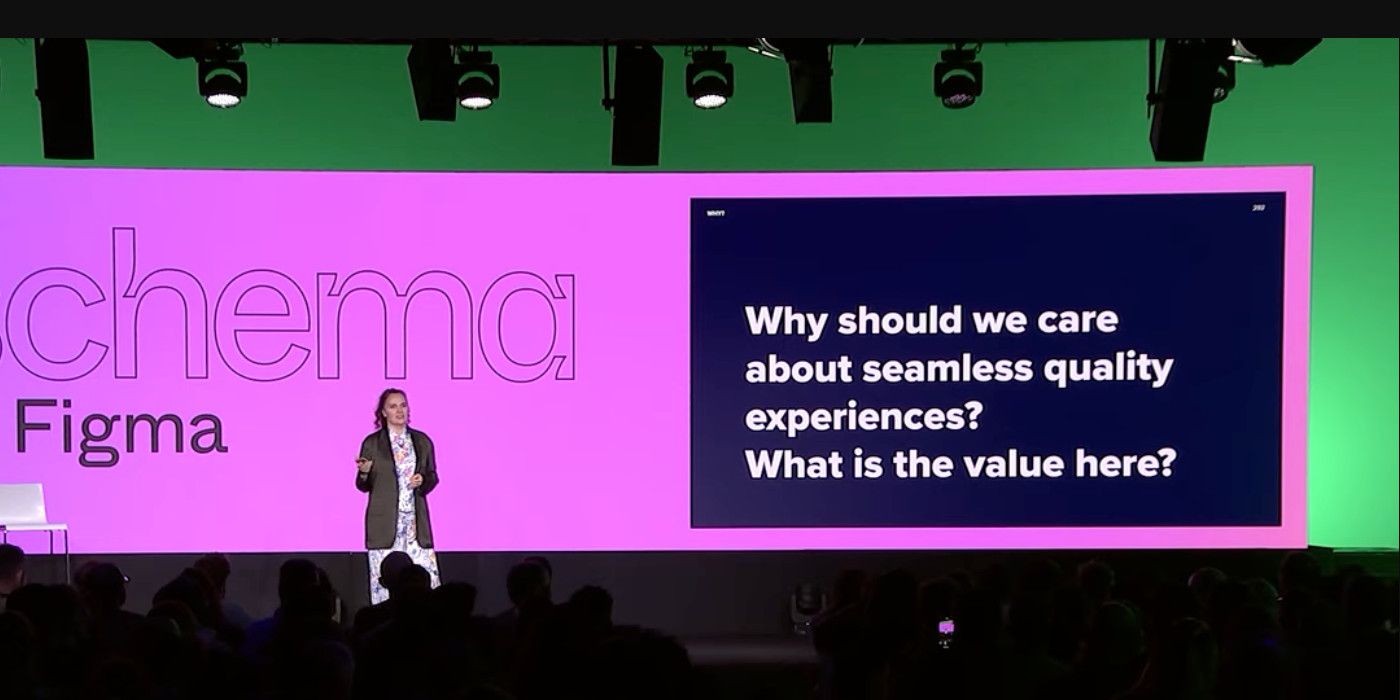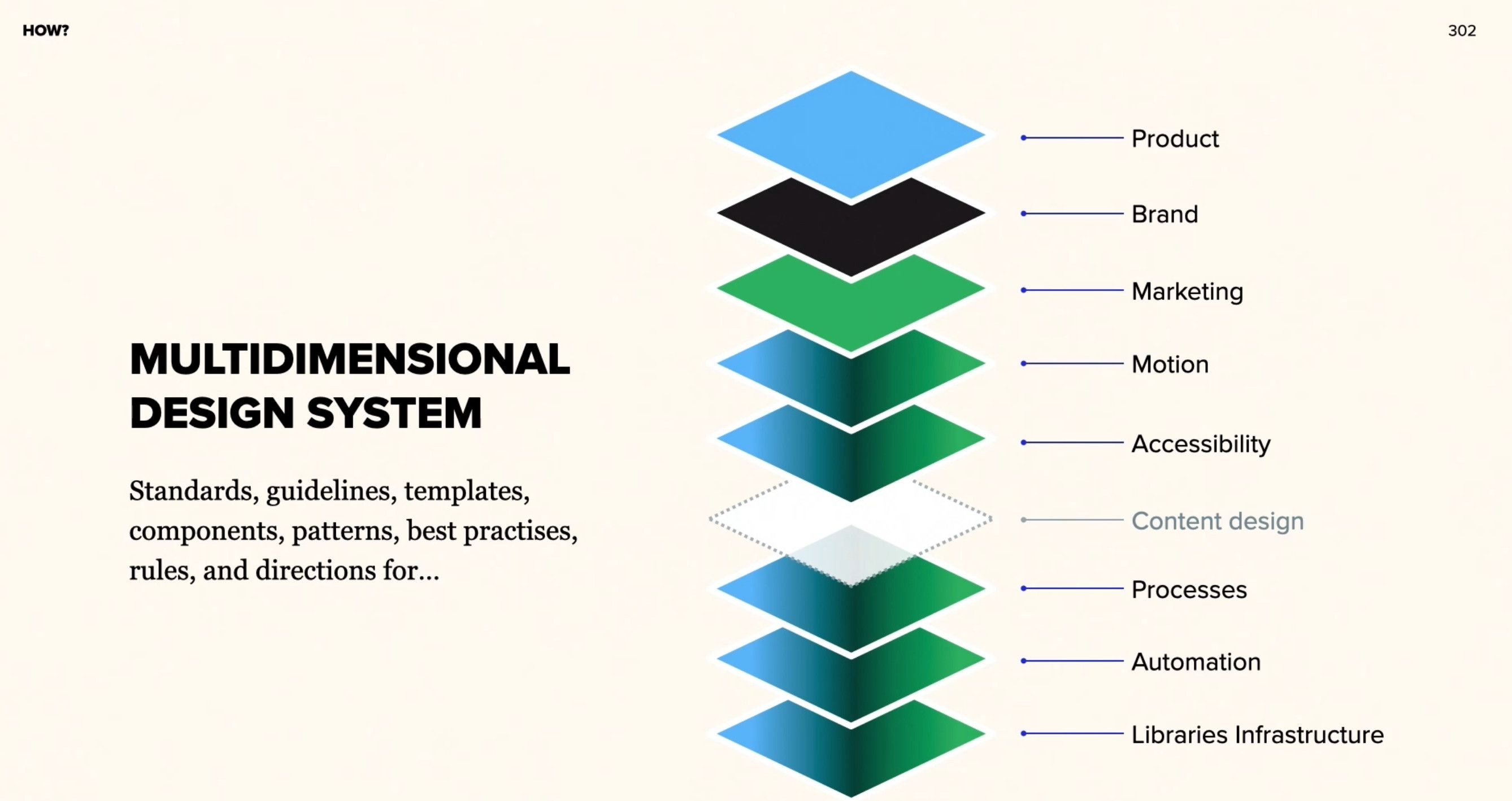Multidimensional (omni-channel) design systems

A brilliant talk by Patrycja Rozmus (Design Systems & Foundations Lead at Brainly) advocating for design systems as the thread that weaves consistency through brand, marketing and product design.
ℹ️ Channels are the many ways that an organisation interacts with customers: email, web, app, chat, text, social media, old media, door to door, smoke signs, pigeons.
Designing omni-channel experiences
Organisations that operate on a number of different channels, tend to optimise for each channel’s specific medium, adapting to the medium’s constraints, mechanics, and rules of engagement.
With time - and scale - teams operating in different channels start diverging in practices and end up creating their own duplicates of design processes, tools, and assets.
Not only this generates incredible amounts of waste, it cripples the organisation from iterating on its brand, tone of voice, and visual language.
But most dramatically, it results in a patchy user journey, fractured by inconsistencies in design elements, harder to understand and learn. And ultimately, 💔 less appealing and satisfactory.
What is the value of consistency
A seamless experience across all touch points unlocks an aesthetic usability effect, a reaction in human brains - maybe ❤️ as well? - that triggers feelings of affection, patience, and loyalty.
The outcomes of this strengthened relationship with customers should be quite appealing for any business:
- 💰 more engagement
- 💰 more satisfaction
- 💰 more retention
Insights and advice
Can design systems improve design decision-making & consistency of the design across the entire company, so even non-designers can create decent designs?
- reduce ping pong between designers and engineers
- build a shared language
- brand system cascades to marketing system, cascades to product system
- identify the dimensions of the design system

Governance
- organisation design should reflect the desire to systematise
- easier with small teams
- with big teams, it’s harder to be transparent and stay aligned
- design in silos is bad but design by committee is worst
- design in community, assign leaders per domain
Contribution and guidelines
- design strong contribution processes
- document development and application guidelines
- invest in onboarding
- setup alignment & feedback loops
- don’t overlook stakeholder management
- company wide education
✍️ Related posts
- What is a design system? - combining systems and business perspective
- Benefits of design systems
Previous post Design systems are design culture